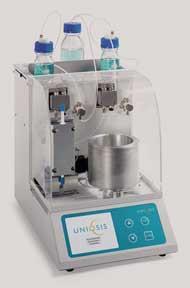The relationship between chemistry and chemical engineering
’Relatively little contact,’ was how an influential 2003 review led by George Whitesides, professor of chemistry at Harvard University, reported the relationship between chemistry and chemical engineering in UK universities.

Almost six years later, the next international assessment of UK chemistry is just around the corner. And as many university scientists now appreciate, the interface between chemistry and engineering is more important than ever.
This month Chemistry World is publishing a joint comment piece in conjunction with the Institution of Chemical Engineers’ magazine The Chemical Engineer , reminding readers how much chemists and chemical engineers rely on one another’s support. A light-hearted list of ’ten things chemists should know about chemical engineering’ will hardly be surprising - and neither should the reciprocal list for chemical engineers.
But it is worth noting that as researchers try to wean the chemicals industry off its dependence on crude oil, much of today’s most innovative chemistry requires a good appreciation of the interplay between molecular behaviour and process engineering.
The pioneers of the petrochemicals industry, working a hundred years ago, were – by the nature of their work – highly interdisciplinary. Today, chemists and engineers hoping to reinvent that industry using renewable resources in biorefineries are similarly inclined. Teasing useful chemicals out of plant sugars, for example, requires catalysts and reactors that can tackle feedstocks higher in oxygen than the industry’s current staple.
Researchers working on sustainable, cleaner chemistry have already discarded concepts of chemical engineers as hard-hat wearing plant operators. Potentially green solvents such as ionic liquids and supercritical carbon dioxide need new plant designs to showcase their benefits. Chemists working on carbon capture must collaborate closely with engineers to scale up prototype systems. Clever chemistry for energy conversion is insignificant without the engineering to provide practical devices. Then there’s flow reactors, nanotechnology, tissue engineering and polymers for drug delivery, gas storage, car batteries, separation membranes: the list goes on.
Encouragingly, there are signs that closer institutional links have been forged between chemistry and chemical engineering in the UK - though it’s some way behind the US and Europe.
In December, a £7 million centre for sustainable chemical technologies was announced at the University of Bath, part of the Engineering and Physical Sciences Research Council (EPSRC)’s £250 million injection into training new industry-focused PhD students. And in January 2008, Nottingham University opened its £4.4 million Dice project ’Driving innovation in chemistry and engineering’ (Chemistry World, February 2008, p8).
These initiatives, however, are aimed mainly at the research level. A UK chemistry undergraduate might remain oblivious to chemical engineering until they reach masters or doctorate level - when adjusting to an engineer’s way of thinking comes as a shock. And a chemical engineer could go straight into industry from undergraduate research without encountering much chemistry at all.
A basic appreciation of the link between chemistry and chemical engineering needs to be embedded into undergraduate courses, along with greater sophistication at a higher level. The new initiatives at Bath and Nottingham are just the first stages in the mixing process.
Richard Van Noorden, acting editor












No comments yet